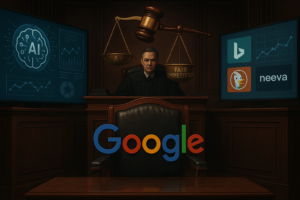Will AI Be Humanity’s Saviour or Its Doom? A Deep Dive into Existential Risks
In the age of rapid technological advancement, the emergence of artificial intelligence (AI) brings both excitement and apprehension. As AI systems become increasingly integrated into various facets of life, a pressing question looms: Could AI ultimately pose an existential threat to humanity? This exploration dives deep into the contrasting perspectives surrounding this pivotal concern, shedding light on the ethical implications of AI’s evolution.
Recent discussions among experts reveal a stark divide in opinion on the impending risks associated with AI. Notably, a letter signed by over 300 AI specialists emphasized that addressing the risks of AI should be a global priority on par with those of pandemics and nuclear warfare. This alarming assertion underscores the gravity of the situation, prompting further inquiry into the nature of AI and its potential consequences.
Expert Insights
To understand the intricacies of this debate, we turn to experts like Daniel Kokotajlo, a philosopher and former forecaster at OpenAI, and Arvind Narayanan, a computer scientist at Princeton University. Their insights provide a nuanced view of the potential risks and benefits of AI, challenging the binary thinking often prevalent in public discourse.
- Kokotajlo’s Perspective: Kokotajlo articulates a cautious outlook, suggesting a 20% probability of AI leading to catastrophic outcomes, including the potential for extinction. His concerns stem from the rapid pace at which AI technologies are being developed and deployed, likening the situation to a tech startup mentality that prioritizes speed over safety. He argues that such an approach is particularly dangerous when applied to powerful technologies like artificial general intelligence (AGI), which could rival human capabilities.
- Narayanan’s Perspective: In contrast, Narayanan offers a more tempered perspective, emphasizing the necessity of responsible development and regulation of AI technologies. He argues that while the risks associated with AI are real, they should not overshadow the considerable benefits that these technologies can bring to society. By fostering open discussions and collaborative efforts among stakeholders, we can mitigate risks while harnessing AI’s potential for good.
Balancing Innovation with Safety
This critical dialogue on AI’s future reflects a broader ethical consideration: how do we balance innovation with safety? As AI continues to evolve, it is imperative that we cultivate a culture of responsibility in its development. This includes establishing robust regulatory frameworks that ensure transparency, accountability, and fairness in AI deployment.
Moreover, public engagement in discussions about AI risks and benefits is essential. As technology increasingly influences our lives, informed citizens must contribute to shaping the direction of AI development. By fostering a diverse range of perspectives, we can navigate the complex ethical landscape of AI, ensuring that it serves humanity rather than threatens it.
In conclusion, the question of whether AI will be our savior or our doom remains open-ended. As we stand at this crossroads, it is crucial to engage in thoughtful dialogue, advocate for ethical practices, and prioritize the safety and well-being of society. Only through collaborative efforts can we hope to harness the transformative power of AI while safeguarding against its potential perils.


